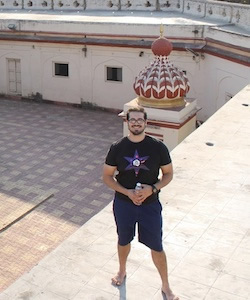With a population of 1.2 billion people, India makes up more than one-sixth of the world’s population. This huge number of people induces a plethora of different cultures throughout the country. Most people don’t realize the amount of diversity that India has. Living here for the past three months has enabled me to experience the beauty of her diversity. However, diversity in India comes with a price, and that price is discrimination. Whatever form of discrimination you can think of, be it sexism, racism, etc., you will find it in India in every single state. One form that isn’t commonly regarded by those who aren’t familiar with the discriminatory situation in India is caste-based discrimination. Caste is a creation of ancient Hindu teachings that set up a social hierarchy based on family legacies. Hinduism is the only religion that uses caste, and therefore India, being the country with the largest amount of Hindus in the world, is almost uniquely plagued with the problem of caste. Before my study abroad experience, I had only learned about caste in the theological framework and never the social framework. Being a justice and peace studies minor, it was profoundly interesting to discover a form of discrimination that I had never been exposed to before.
Caste is everywhere in India and nowhere in India. Caste-based discrimination has been illegal for years, and the term has acquired a negative connotation in terms of progressivism and democracy—two ideals that India holds important today. However, caste is a silent killer. Just because caste is illegal and nobody outright practices casteism, doesn’t mean it is nonexistent. Casteism is alive and well today, and I have learned this through my experiences, conversations, and classes here in India. A person’s caste can be identified by their surnames. As a result, people of higher castes like the Brahmins and the Kshatriyas will implicitly discriminate against Dalits (the lowest caste) in many different processes. For example, people will be denied jobs and housing solely on the fact that they provided their surnames in applications. Dalits also make up most of the poverty in India; they make up the majority of those who live in slums, work as housekeepers and maids, beg for money, etc. They are stuck in a perpetual and oppressive poverty cycle where there is almost no hope of economic mobility. Caste reform has been an ongoing fight in India for quite some time now. But, why is it that it is still so dominant in Indian social culture?
Racism, sexism, classism, etc. have all been formed out of societal practices and habits. That is why there has been a lot of successful reform and changing of ideologies on these forms of discrimination. What makes casteism different is the role of religion in sustaining this ideology. Hinduism, one of the oldest religions in the world, preaches caste discrimination within its religious texts, the Vedas. Therefore, caste is embedded in the minds of those who are faithful and practice Hinduism. Even some of the Dalits that are Hindu accept their role as the lower caste. Religion is such a strong backbone for discrimination, and the ways that some of the people in India use it relentlessly to oppress others is disgusting. Hinduism is used as a tool to continue this discrimination against Dalits. Although there have been a lot of reservations set for Dalits by the government, India still faces this caste-driven fight for equality. In my opinion, because caste is religion-based, it is going to be a lot harder to reform than other forms of discrimination.

